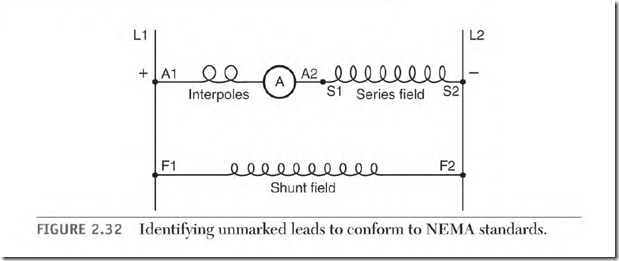Most compound DC motors have three circuits, the armature (Al and A2), the series field (Sl and S2), and the shunt field (Fl and F2).
Use an ohmmeter to locate the three pairs (that have a circuit to each other). The shunt field leads (Fl and F2) are usually smaller than the armature and series field leads. The shunt field has much higher resistance than the armature and series field.
Identify and temporarily label the shunt field leads Fl and F2. Identify the armature leads by touching one ohmmeter probe to a lead and the other to the commutator. Label them Al and A2. Temporarily label the remaining leads Sl and S2.
Connect the motor as shown in Fig. 2.32 and apply enough DC power to make it rotate. The rotation should be counterclockwise facing the commutator. Interchange Al and A2 if the rotation is wrong.
Disconnect Fl and apply enough power to Al and S2 to get rotation. If rotation reverses, interchange and re-label the series field leads.
NEMA standard rotation is counterclockwise facing the commutator end, with positive on Al and Fl.
